Color Mastery: Choosing The Perfect Palette For Your Website

Color is a big deal for websites. It’s like the outfit your site wears to make a great first impression. We know how colors can make people feel and connect them with brands. Think about it: when you see red and yellow, don’t you just think of fast food? That’s color psychology in action!
In the world of web design, choosing colors is really important. It helps your brand stand out and makes sure visitors have a good time on your site. Understanding color theory is like having a secret map that shows which colors work best together.
Knowing this can help create feelings or set the mood on your website.
For our website to look amazing, we use a main color that covers 60% of the space, add another color that takes up 30%, and finish with an accent color for the last 10%. This mix has to look good but also be easy for everyone to see clearly, even if they see colors differently.
We also stick with our chosen colors everywhere so people will recognize us right away—like knowing someone by their face or voice! Tools like Adobe Color and Coolors are super helpers when picking out these colors because they know all about harmony.
Colors aren’t just pretty; they speak directly to customers. Did you know three-quarters of folks can spot a brand from its logo alone? And almost half pick out brands by their special colors? Yep, we’re going to show you how top brands do it too! Get ready to discover how perfect palettes can build your business’ identity online.
Let’s light up our sites with smart choices!
The Importance of Color in Web Design
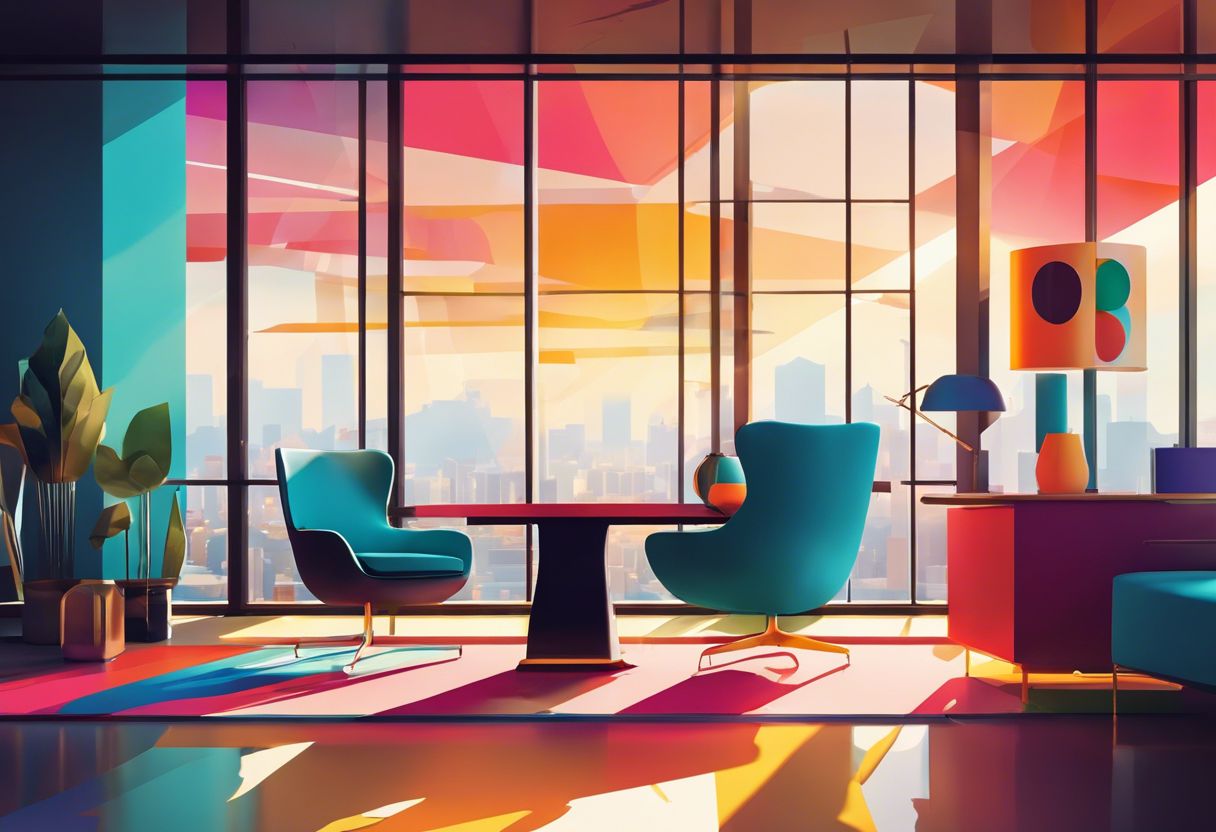
Color plays a crucial role in web design, as it creates the first impression for visitors and helps to build brand identity. Additionally, the use of color can significantly enhance user experience by influencing emotions and perceptions.
Understanding its importance is key to creating a visually appealing and effective website.
Creating a First Impression

We know how fast someone can make up their mind about a website. It’s like meeting someone for the first time; that first look counts. Your site’s color scheme hits visitors before anything else.
They instantly feel something, and this feeling sticks with them.
It’s our job to pick colors that tell your brand’s story right away. Imagine walking into a room painted calm blue or sunny yellow – each hue tells you how to feel without saying a word.
That’s what we need on your website too! We want people to see the colors and quickly get who you are and what you’re all about.
We use colors that not only grab attention but also make sense for what you offer. Let’s say green makes folks think of health or growth, while blue might say “trustworthy” or “professional.” Picking just the right shade gives off vibes that match your brand identity and sets the tone for everything customers will experience on your site.
Building Brand Identity

After grabbing attention with color, it’s time we focus on cementing our brand in the minds of customers. Our choice of colors can tell them who we are without saying a word. For example, using green can make people think about nature or growth, while blue might make them feel calm and trusting.
Color creates a visual identity that people remember every time they see it. Think about some famous brands; their colors are part of what makes them special. We want to do the same for our websites and all other places where people meet our brand.
Each color has its own message, so let’s pick ones that match what we’re all about. Let’s ensure these colors show up everywhere—from site to social media—so folks know us right away.
It helps build trust and makes sure our brand stands out in a busy world.
Enhancing User Experience

Colors do more than just make your website look good; they play a huge part in how people feel when they visit your site. We understand that the right colors can guide users to click, read, and buy more often.
With an eye-catching color palette, you create an environment where visitors enjoy their time on your website.
Let’s talk about making every visit something special with colors. A well-chosen color scheme makes everything clearer and helps folks find what they need faster. This means happier visitors and better chances they’ll come back or tell friends about your site! Using colors smartly is like rolling out a red carpet for guests—it shows them you value their experience.
Understanding Color Theory

Understanding color theory is essential in creating a visually appealing and effective website. By grasping the basics of the color wheel, learning about color harmony, and understanding how different colors evoke different emotions, you can effectively select the right palette for your website.
Basics of the Color Wheel

The color wheel is fundamental to understanding colors. It consists of three categories: primary, secondary, and tertiary colors.
- Primary Colors: These are red, blue, and yellow. They are not created by mixing other colors together.
- Secondary Colors: Orange, green, and purple are formed by blending two primary colors together.
- Tertiary Colors: These are the result of mixing a primary color with a neighboring secondary color on the color wheel.
The Significance of Color Harmony

Color harmony is crucial in creating a cohesive and visually appealing website. It’s about making different colors work together seamlessly, enhancing the overall user experience, and shaping customer perception of your brand.
By understanding how colors complement each other, we can create designs that resonate with our audience on an emotional level. Color schemes influence how potential customers perceive a product or service, impacting their purchasing decisions and association with your brand.
Paying attention to color harmonies allows us to leverage the psychological impact of colors on our audience. Different color combinations evoke specific emotions and moods, helping businesses convey their intended message effectively.
Color Temperature and Mood
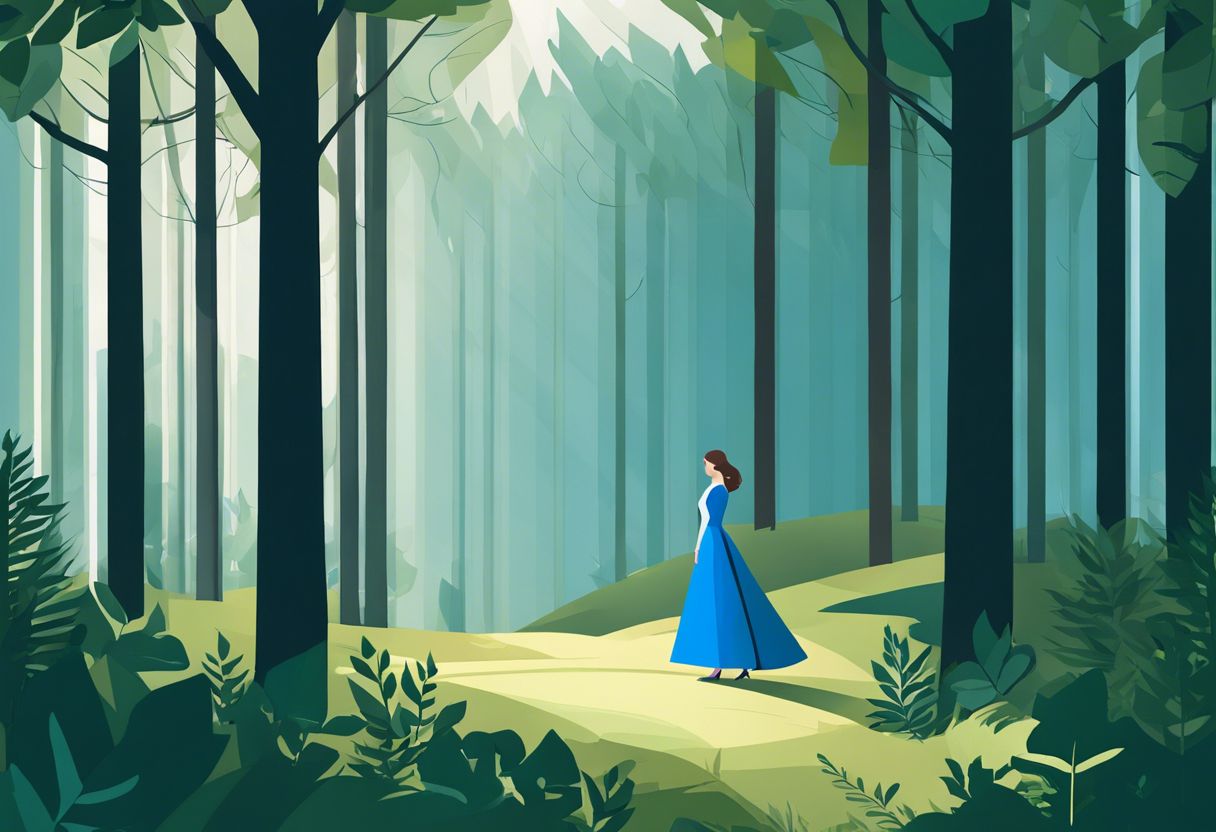
Understanding color temperature and mood is crucial in creating a visually appealing website. Different colors have the power to evoke specific emotions, which can influence how visitors perceive and interact with your site.
For instance, cool colors like blue, green, and purple are often associated with calmness and stability. On the other hand, warm colorssuch as red, orange, and yellow can create feelings of energy and excitement.
By considering these emotional responses to color, you can strategically choose hues that enhance the mood of your website and effectively communicate your brand’s identity.
The Psychology of Color

Understanding the emotional responses and meanings associated with different colors can significantly impact how your website is perceived by visitors. Dive deeper into color psychology to learn how to evoke the right emotions and associations with your chosen color palette, ultimately creating a memorable user experience.
Emotional Responses to Color

We understand the power of color in influencing emotions and behaviors, and we can harness this influence to create meaningful connections with our audience. Color psychology plays a crucial role in user experience, affecting how people perceive and interact with our digital interfaces. Here’s how different colors evoke emotional responses and impact user engagement:
- Red: Stimulates excitement, passion, and urgency. It grabs attention and creates a sense of urgency, making it ideal for call-to-action buttons.
- Blue: Evokes feelings of trust, security, and calmness. It is often used by businesses to convey professionalism and reliability.
- Yellow: Radiates energy, positivity, and optimism. It can be effective in capturing attention and creating a sense of happiness.
- Green: Symbolizes nature, growth, and harmony. It is commonly associated with health, sustainability, and wealth.
- Purple: Represents creativity, luxury, and spirituality. It can add a touch of elegance and mystery to the design.
- Orange: Conveys enthusiasm, vitality, and friendliness. It can create a playful and energetic vibe.
- Black: Signifies sophistication, power, and authority. When used thoughtfully, it can exude elegance and timelessness.
- White: Symbolizes purity, simplicity, and cleanliness. It provides a sense of space and clarity in design.
Color Meanings and Associations
Understanding the meanings and associations of colors is crucial in creating a website with a strong visual impact that resonates with your audience. Here’s an insight into color symbolism and cultural influences to guide your decision-making process when selecting the perfect palette for your website:
- Red Symbolism: In many cultures, red symbolizes passion, energy, and urgency. It can evoke powerful emotions and grab attention, making it suitable for brands aiming to convey excitement and vitality.
- Blue Symbolism: Blue is often associated with calmness, trust, and reliability. Its soothing effect can instill a sense of security and dependability, making it ideal for businesses seeking to establish a professional and trustworthy image.
- Yellow Symbolism: Linked to optimism and creativity, yellow is a vibrant color choice that exudes happiness and innovation. Brands wanting to communicate positivity and fresh ideas often incorporate yellow into their branding.
- Cultural Influences: It’s essential to consider cultural associations of colors as they vary widely across different regions. For instance, while white represents purity in Western cultures, it symbolizes mourning in some Eastern cultures.
- Branding Impact: The colors you choose for your website should align with your brand’s values and personality while also resonating with your target audience’s preferences and cultural context.
Crafting Your Website’s Color Palette

Selecting the perfect color palette for your website is crucial in creating a cohesive and visually appealing design that resonates with your brand and audience. To learn more about crafting an effective color palette, continue reading to discover the impact of color on user experience and branding.
Selecting a Dominant Primary Color
We understand the significance of the main color on your website. It sets the overall tone and feel of your brand. According to the 60/30/10 rule, this dominant color should take up about 60% of your website’s space.
When choosing this primary color, it’s crucial to consider its association with your brand and how effectively it conveys your message to your target audience. The dominant and secondary colors must work harmoniously to create a cohesive and visually appealing designthat resonates with visitors.
Crafting a successful website palette starts by selecting a main color that aligns with your brand identity while also capturing the attention of your intended audience. By mastering the basic concepts of color theory, you can confidently choose a primary color that speaks volumes about your business while providing an engaging visual experience for visitors.
Incorporating Complementary Secondary Colors
After selecting a dominant primary color, incorporating complementary secondary colors is crucial to creating a well-balanced and visually appealing color palette for your website.
Complementary colors are those that are opposite each other on the color wheel, such as blue and orange or red and green. When used together, these pairs create a strong visual contrast that can make elements stand out and grab attention.
Using secondary colors derived from the combination of primary colors can add depth and vibrancy to your website’s overall look. For instance, mixing red with yellow creates orange, blue with yellow makes green, while blue combined with red produces purple.
By strategically integrating these complementary hues into your design, you can create an engaging visual experience for your audience while reinforcing brand identity and personality.
Choosing an Effective Accent Color
Now that we’ve discussed incorporating complementary secondary colors, let’s delve into the importance of choosing an effective accent color for your website. An accent color is a powerful tool that adds visual interest and emphasis to specific elements on your site.
When selecting a strong accent hue, consider its ability to create contrast and draw attention without overpowering the primary colors. This distinctive color should be used strategically throughout your website to highlight key features and calls-to-action.
It’s essential to ensure that the accent color you choose complements your primary color palette while also standing out enough to make an impact. By carefully integrating this accent hue into various design elements such as buttons, links, or headings, you can guide user interactions and emphasize important information effectively.
Visuals that Sell: Boost Engagement with Images and Videos

Visual content is a powerful tool for engaging customers. Color psychology plays a significant role in shaping customer responses to visual elements. When choosing images and videos for your website, keep in mind that they can grab attention more effectively than text alone.
Moreover, strategic use of visuals can strengthen brand identity and enhance customer engagement.
Incorporating visual storytelling into your marketing strategy can result in higher customer engagement. By understanding the impact of color and imagery on the human brain, you can create visuals that not only capture attention but also leave a lasting impression on your audience.
This approach aligns with our goal of boosting customer engagement through effective use of color and visuals to tell our brand’s story.
Implementing Color Schemes
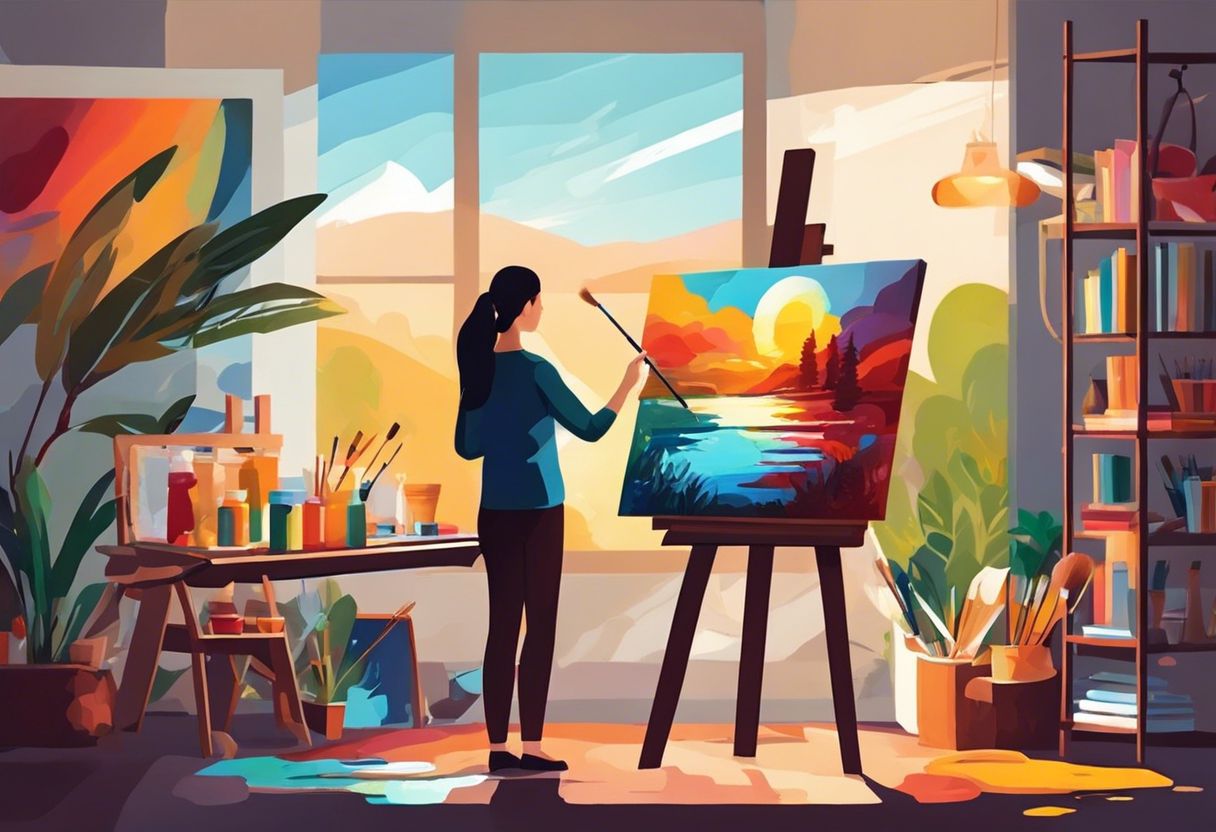
When it comes to implementing color schemes for your website, it’s important to consider the different options available and how they can impact the overall design. Whether you opt for a monochromatic palette for a sophisticated look or choose complementary colors for a dynamic effect, understanding the psychology and theory behind these choices is crucial in creating a visually appealing and effective website.
Monochromatic: Single-Hue Sophistication
When it comes to creating a visually stunning website, the monochromatic color scheme is an excellent choice. This sophisticated palette revolves around a single hue, including variations in tints and shades.
By using different intensities of one color, along with black, white, and gray, you can achieve a modern and stylish visual aesthetic for your website. This approach simplifies the process of selecting colors while ensuring a cohesive and elegant look that resonates with visitors.
Implementing a monochromatic scheme offers several practical benefits for your website design. It creates an instantly harmonious atmosphere by utilizing only one primary color throughout various elements.
This consistency fosters a sense of unity and sophistication that enhances the overall user experience. Embracing this single-hue approach will undoubtedly elevate your website’s visual appeal while conveying professionalism and modernity to your audience.
Analogous: Harmonious Side-by-Side Hues
Now that we’ve explored the elegance of single-hue sophistication in monochromatic color schemes, let’s delve into the seamless blend of analogous color schemes. Analogous colors are like best friends on the color wheel, as they sit next to each other and create a harmonious visual experience.
Picture side-by-side hues that effortlessly complement one another, offering a sense of serene unity within your website’s design.
An important fact about analogous color schemes is their ability to evoke a peaceful and comfortable ambiance. With these harmonious side-by-side hues, you’re able to infuse your website with a consistent yet dynamic appeal.
Complementary: Dynamic Opposing Colors
Selecting colors that are opposite each other on the color wheel creates a striking and harmonious contrast for your website. Complementary colors, such as blue and orange or red and green, bring energy and vibrancy to your web design.
When used effectively, complementary colors can give your brand a strong personality and convey specific values to your audience.
Packaging designers often use complementary colors to create a dynamic and opposing color scheme that captures attention and leaves a memorable impression. By incorporating these bold combinations into your website’s color palette, you can establish an impactful visual identity for your business that resonates with visitors.
Crafting an effective color scheme involves thoughtful consideration of complementary colors to ensure they work in harmony while creating visual interest. This approach significantly contributes to enhancing the overall user experience on your website.
Triadic: Bold and Balanced Trio of Colors
When we talk about color schemes, the triadic approach offers a bold and balanced trio of colors that can bring vibrancy to your website. With this scheme, you’ll use three evenly spaced colors on the color wheel – one as the dominant hue and the other two as supporting accents.
The result? A youthful, vivid look with balanced combinations that can make your website pop. This is a great way to infuse energy into your brand’s online presence.
And for business owners seeking to leave a lasting impression on their audience through visually striking web design, embracing triadic color palettes may be just what’s needed!
Tools and Resources for Color Palette Selection
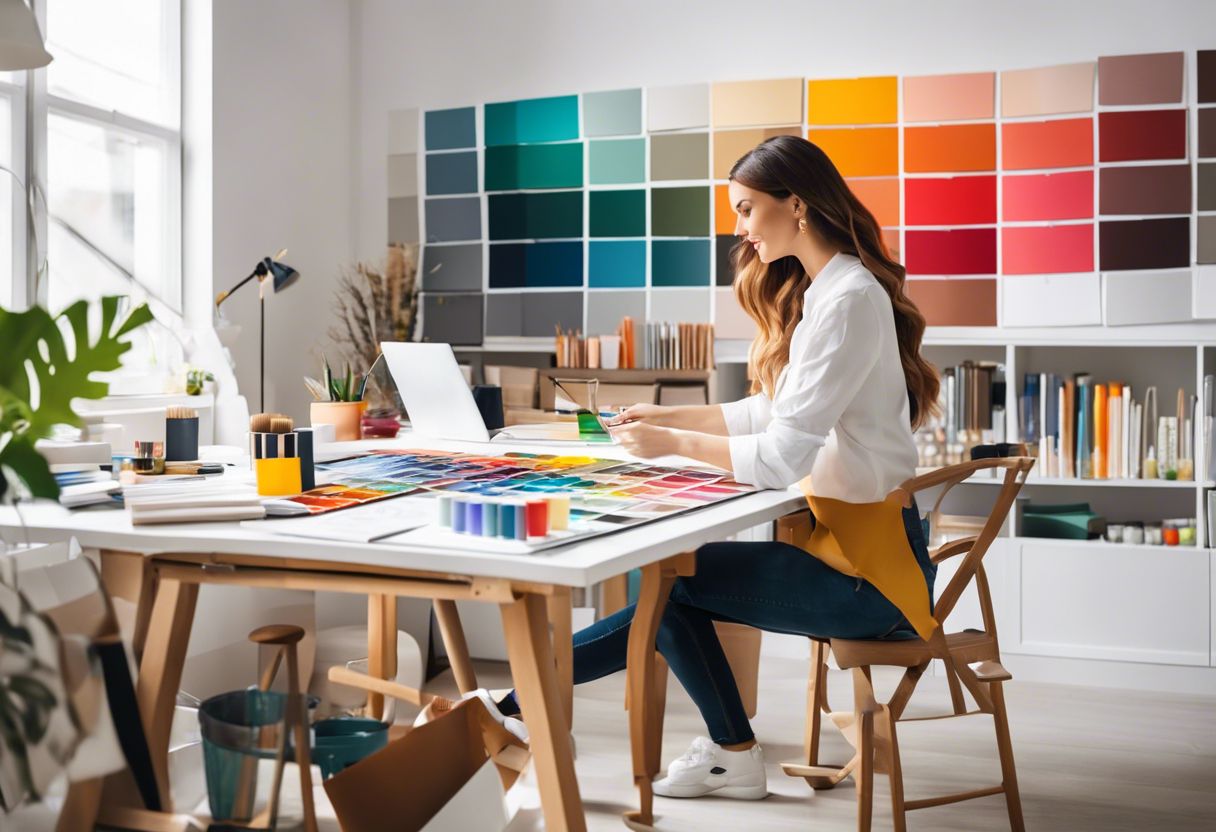
When it comes to selecting the perfect color palette for your website, there are a variety of tools and resources available to help you. From Adobe Color for harmony exploration to Coolors for quick palette generation, these resources can make the process of choosing and implementing colors much more efficient.
Adobe Color for Harmony Exploration
When exploring color harmony for our website, Adobe Color is an excellent tool to consider. It’s user-friendly and allows us to create and explore color palettes based on fundamental color theory principles.
We can utilize the color wheel or even upload images to generate unique palettes. Additionally, it provides access to thousands of community-created color combinations which can be a great source of inspiration.
Moreover, Adobe Color offers the functionality of creating color themes by choosing harmony rules and adjusting swatch colors using the intuitive interface. This tool not only helps in understanding the strategic use of colors in web design but also empowers us with knowledge about combining psychological aspects with harmony principles for impactful visual communication.
Coolors for Quick Palette Generation
Transitioning from exploring color harmony in Adobe Color, business owners can also benefit from Coolors for quick palette generation. This fast and user-friendly color palette generator allows you to effortlessly click through random color combinations to find the perfect one for your website.
With its palette generator, you can create palettes in seconds and browse millions of trending color schemes, making it a valuable resource for mastering color palettes and choosing the perfect one for your website design.
Best Practices in Color Application
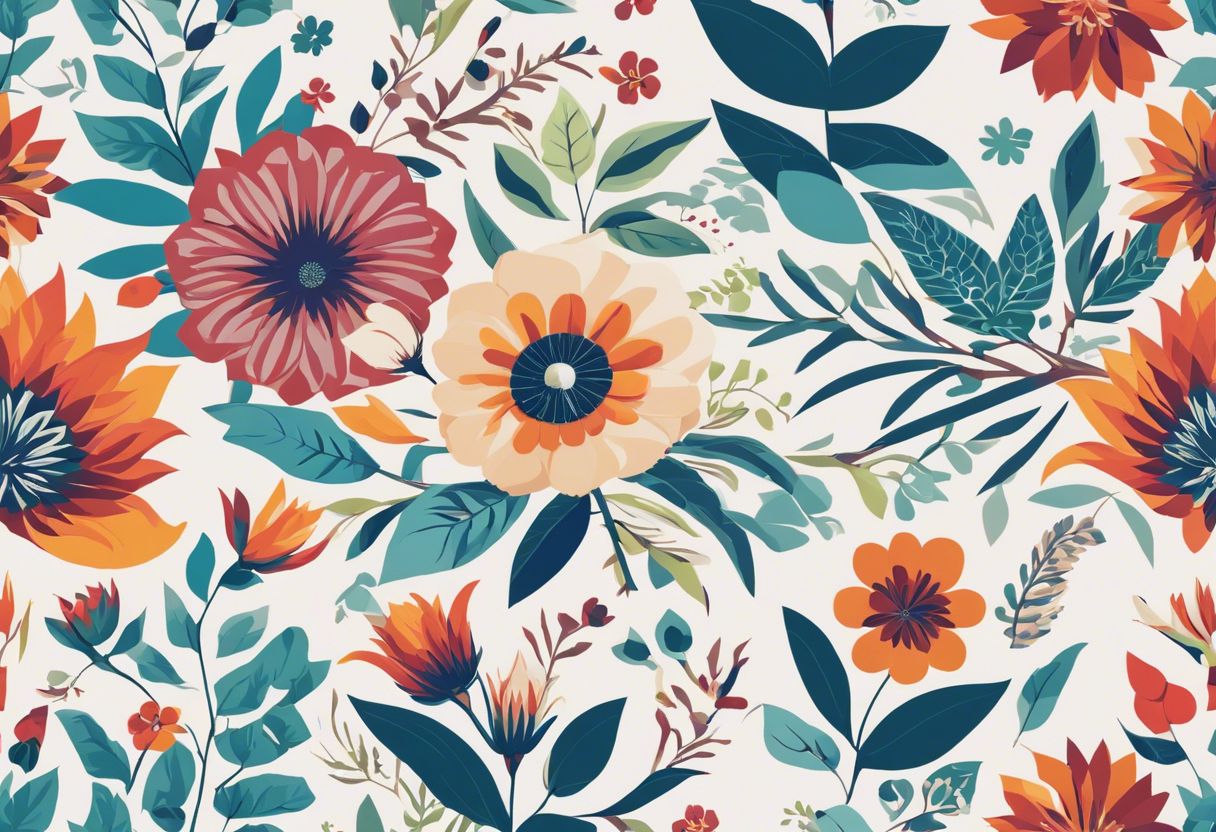
Prioritizing accessibility and readability is crucial in choosing website colors. Consistency across the design is also key, and getting feedback on color choices can provide valuable insights for improvement.
Prioritizing Accessibility and Readability
When selecting colors for your website, it’s vital to consider accessibility and readability. This means ensuring that everyone, including those with visual impairments or color blindness, can easily read and navigate your site.
One way to achieve this is by prioritizing color contrast. Ensuring a sufficient level of contrast between text and background colors helps improve legibility for all users, enhancing the overall user experience.
Web accessibility standards emphasize the importance of color selection in creating an inclusive online environment. For instance, considering the contrast ratio between text and background colors is crucial for individuals with visual impairment or color vision deficiencies.
By following these guidelines and prioritizing accessibility in your color choices, you demonstrate a commitment to providing an optimal user experience for all visitors to your website.
By focusing on maximizing accessibility through thoughtful color selections, you not only enhance usability but also demonstrate inclusivity towards diverse audiences who may interact with your website.
Maintaining Consistency Across the Design
After ensuring that your website’s colors prioritize accessibility and readability, maintaining consistency across the design is essential for several practical reasons. Here’s why and how to achieve it:
- Uniformity in color application fosters reliable brand recognition and identity. Consistent colors help users identify and recall your brand with ease, contributing to a stable brand identity.
- Cohesive color usage enhances user experience by providing a seamless viewing experience. When similar interactive elements feature the same colors, it creates a comfortable browsing experience for your visitors.
- Reliable color consistency reinforces brand identity, making your website visually memorable and distinct among competitors.
- It contributes to an overall harmonious color palette, which is crucial for creating a user-friendly web design and can significantly impact user engagement.
- By utilizing consistent colors throughout your web design, you ensure reliable color consistency across all aspects of your website, contributing to enhanced user experience.
Getting Feedback on Color Choices
After finalizing the color choices for your website, it’s crucial to seek feedback from various perspectives. This can include potential users, design experts, and even colleagues.
By doing so, you can gain valuable insights into how the colors are perceived and whether they align with your brand identity and intended user experience. Additionally, gathering feedback allows you to identify any potential accessibility issues related to color choices, ensuring that your website is inclusive and user-friendly.
Utilizing brand colors and understanding color psychology enables a more effective selection of color schemes on your website. By leveraging existing websites and studying successful brand color palettes, you can refine your own palette based on real-world examples.
This approach helps in creating an aesthetic appeal while taking advantage of established design principles that resonate well with users’ visual preferences.
Inspiration from Top Brands

Analyze successful brand color schemes to draw inspiration for your website’s palette. Understand how top brands leverage color psychology and cohesive palettes to enhance their brand identity and user experience.
Analyzing Successful Brand Color Schemes
We understand the importance of analyzing successful brand color schemes. Here are key points to consider when evaluating and learning from top brand color palettes.
- Logo recognition is significantly influenced by brand colors, with 45% of people identifying brands based on their color schemes, emphasizing the pivotal role of harmonious and memorable branding colors.
- Brand identity is intricately tied to color psychology, as specific hues can convey a brand’s personality and evoke emotional responses that align with its message and positioning in the market.
- Brand recognition and buying behavior are influenced by effective color schemes, showcasing the power of well-crafted visuals in attracting and retaining customers based on their subconscious perceptions.
Conclusion

Crafting the perfect color palette for your website is crucial for making a lasting impression and building a strong brand identity. Understanding color theory and psychology can guide you in choosing harmonious colors that resonate with your audience’s emotions.
By implementing effective color schemes and maintaining consistency across your design, you can create an engaging user experience that leaves a positive impact on visitors. Leveraging tools for palette selection and drawing inspiration from successful brands can help you elevate the aesthetics of your website, ultimately influencing visitor behavior and benefiting your business goals.
Discover how the right visuals can elevate your website’s engagement by exploring our guide on images and videos.
FAQs
1. How do I choose the perfect color palette for my website?
You can choose the perfect color palette for your website by considering your brand identity, target audience, and the emotions you want to evoke.
2. What is the importance of selecting the right colors for a website?
Selecting the right colors for a website is important because it can affect user experience, convey brand messaging, and influence visitor perceptions.
3. Can I use many different colors in my website design?
It’s best to limit your color palette to a few complementary colors to maintain visual harmony and avoid overwhelming visitors with too many competing elements.
4. What are some tips for creating a visually appealing color scheme for my website?
To create an appealing color scheme, consider using a dominant primary color balanced with secondary and accent colors that complement each other harmoniously.
5. Are there any tools or resources available to help me choose the perfect colors for my website design?
Yes, you can use online tools such as Adobe Color, Coolors, or Color Hunt to explore various color palettes and find combinations that work well together for your website design.


